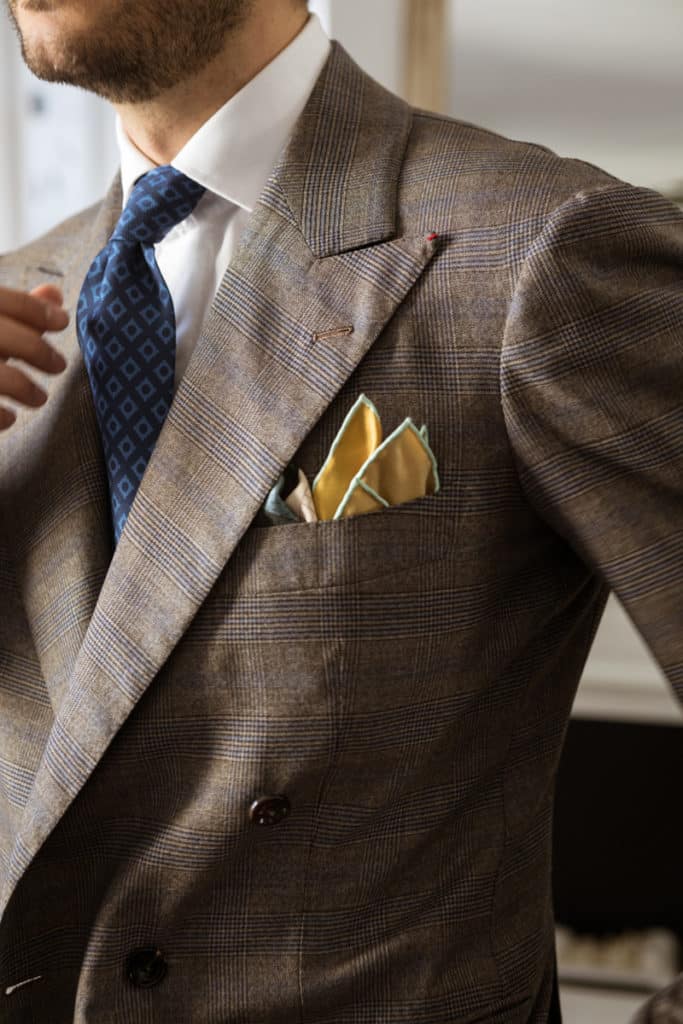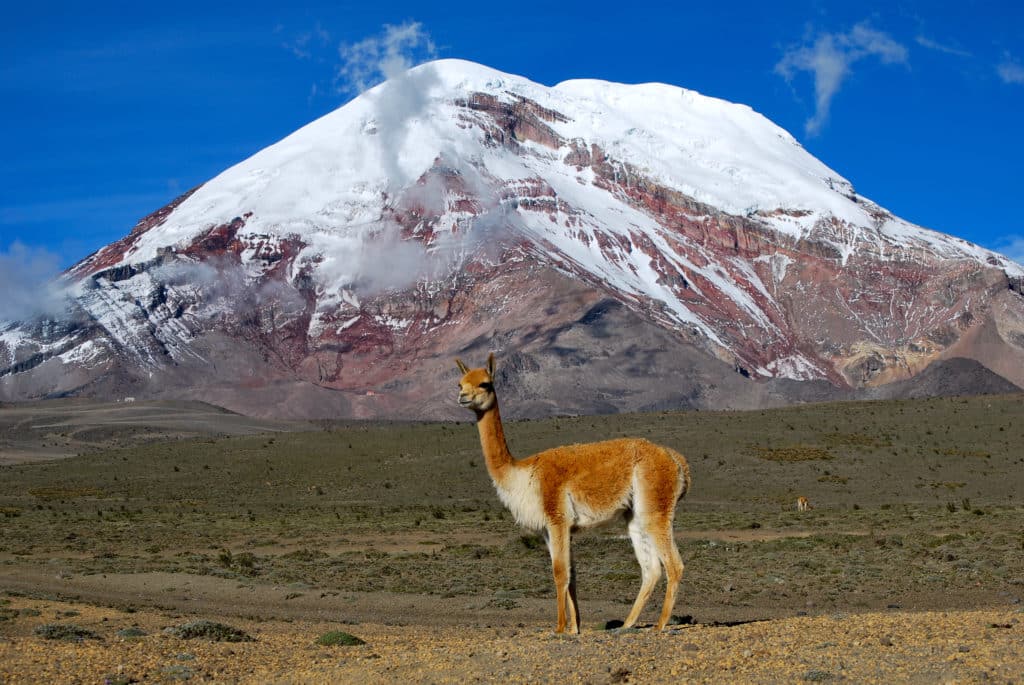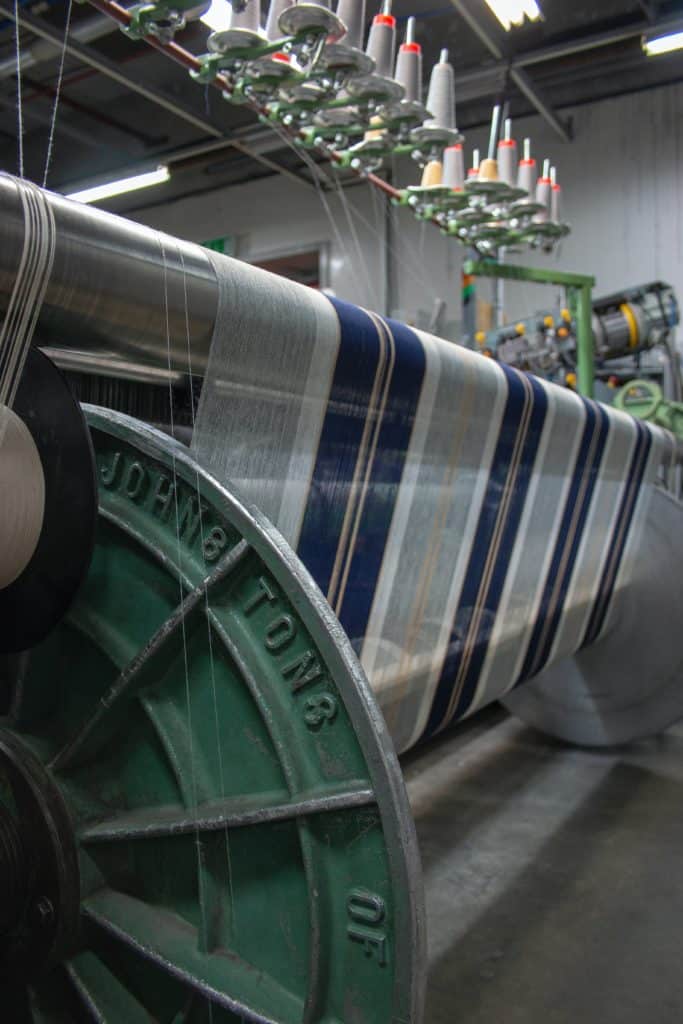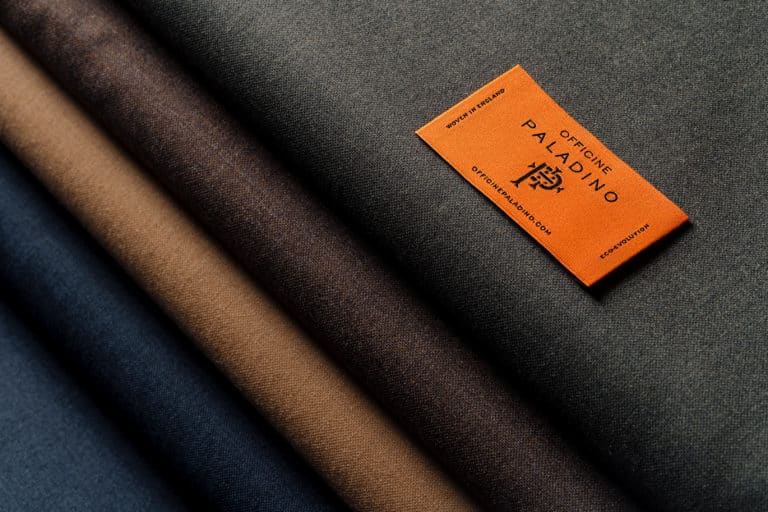Wool is one of the oldest textile fibres used in clothing, since around 5,000 years ago in Europe and the Middle East. Since then, selection and domestication have created over 200 different breeds of sheep in the world, with over 30 specifically bred for their wool.
Wool is preferred by tailors for making suits because of its many fine qualities, from breathability to natural stretch, handling and sustainability. However, it also comes in many different variations, according to the breed. The term also covers other mammals apart from sheep, such as goats, rabbits and camelids. We look at some of the most commonly used types of wools in suiting and why they make great fabrics for your next suit.
- Merino wool
- Shetland wool
- Vicuña wool
- Lambswool
- Alpaca wool
- Cashmere wool

Latte OP 2152 is a Super 130s merino wool fabric is an example of a classic fabric, ideal for suiting in all seasons. It has a great handle, with a high-twist fabric to reduce creasing and offers a soft touch.
Merino wool
Merino sheep are a group of domesticated sheep breeds that are known for their very soft wool. They originated from Spain and were monopolised by the Spanish until the late 18th century. Merino wool became renowned in the 16th century and quickly became one of the most expensive grades of wool in the world.
The most exclusive of Merino breeds are the Royal Escorial sheep. Escorial wool is now found in Australia and New Zealand, and offers a natural elasticity, while remaining lightweight. This means that it’s comfortable and easy to wear, yet it offers great insulation for cold climates. Escorial wool has short and curly fibres which make them easy to twist and therefore retain their shape, while having a very soft touch. They are, however, incredibly expensive and therefore used rarely in full suits; instead, scarves and other textile products in Escorial wool are more commonly seen.
Other merino breeds are used to create high quality wool fabrics that are ideal for suiting. Merino sheep do not stop growing wool, and as such must be shorn regularly. They produce a very fine and soft fiber which is curly, and thus easy to twist and also soft to touch. This gives a merino wool fabric its qualities of natural stretch, great handling and crease resistance. There are many different grades of merino, from the ultra-fine to strong. (For more information on S-numbers and fibre thickness, see this article.)

The Shetland sheep are known for their special natural colouring and fine wool, making it ideal for knitting. Image by Robert Witański/Unsplash.
Shetland wool
Shetland sheep originated on the Shetland Isles in Scotland, but have been bred in other parts of the world today. They are a hardy species, small and slow-growing, creating a very fine, soft wool that is prized in knitwear. A unique quality of Shetland wool is that it produces naturally coloured wool. The sheep can come in different shades from solid white to reddish brown, black and many others. In places where naturally coloured, undyed wools are popular, this is highly prized.
In bespoke menswear, Shetland wool is used most commonly in tweeds, as it is a coarser fibre compared with merino. They are also commonly used in knitwear, and even knit lace shawls that are incredibly fine. In knits, the Fair Isle knitting technique is often applied to Shetland wools to create multi-coloured patterns from the undyed wool yarn. As such, Shetland wool is rarely seen in suiting, except as overcoats or winter suits, as they are relatively light but provide impressive insulation. Due to the coarser fibre, they do not stretch well as a fabric.

Vicuña are a beautiful camelid, small and elegant producing a fine wool that’s highly prized for its quality and rarity. Image from Wikipedia Commons.
Vicuña wool
Vicuña are two breeds of South American camelids that live high up in the Andes. They are believed to be the ancestors to alpacas, and produce incredibly fine wool in very small quantities. This means that vicuña can only be shorn every few years to yield a useful amount of wool, from the wild (they are not domesticated, and thus have to be caught for shorning). Vicuña fibres are scaled and hollow, filled with air and making it easy to interlock together. This traps air and creates insulation.
Vicuña fibres are sensitive to chemicals, but are among the finest in the world, comparable to ultra-fine merino. This means that most vicuña fabrics are in their natural, undyed state. It’s often used for small woollen products, and less commonly seen in suiting. Where it’s used, the suit is incredibly soft and comfortable, with high breathability and yet insulating. Naturally, such suits are highly expensive.
Lambswool
As it’s a rather self-explanatory term, lambswool is the wool that’s shorn from ewes at their first shearing, roughly around six months. It’s very fine, soft, elastic and slippery, making them itch-free and therefore comfortable against the skin. This makes lambswool ideal for knitwear, where it’s most commonly used. A similar wool that’s also produced from young sheep is weaner fleece, which have longer strands than lambswool but possess similar qualities.
Alpaca wool
Alpacas are a type of camelid that’s closely related to vicuña, with two main types of wool produced from two different breeds. Huacaya alpacas grow in a similar way as sheep, while Suri alpacas produce a fibre that hangs off the alpaca in locks, like hair. Suri alpacas are a small portion of the alpaca population. The fibres shorn from both breeds are soft, fine, with a silky texture. Alpaca fibre is naturally fire-retardant and water-repellant, highly insulating and also hypoallergenic, because it contains no lanolin (the natural oil that sheaths sheep wool).
While both Huacaya and Suri alpaca fibres can be worsted and milled to produce fabrics, Huacaya fibres are also commonly used in knitwear due to its natural crimp. In comparison, Suri fibres have almost no crimp and therefore are ideal for suiting. Like sheep, alpacas are shorn yearly, and the wool carded and sorted before being spun and processed. Their fibres are smoother than sheep wool, which gives its silky sheen and softness. It’s fine and lightweight, and a great insulator which makes it ideal for cold weather suiting.

A cashmere fabric is being woven in Scotland. Cashmere is expensive due to the amount that can be obtained annually per goat, and prized for its water-repellent and insulating qualities. Image by Johnstons of Elgin/Unsplash.
Cashmere wool
Cashmere (or more accurately, Kashmir) wool is a fibre from cashmere, pashmina and other goat breeds. It’s collected from the neck region of fine-haired goat breeds, during spring moulting when the goats naturally shed their winter coat. These goats produce two layers of fleece, a fine soft undercoat that’s prized, and a thicker overcoat called guard hair. After moulting, the two layers must be separated before the undercoat is dyed and spun into yarn, and used for garment production.
Younger goats produce an even finer hair called baby cashmere, which is softer than regular cashmere and even more comfortable against the skin. Cashmere fibres are comparable to ultrafine and superfine merino wool, with very flexible fibres that make them easy to weave. It’s also water-repellent and offers good thermal insulation. It’s divided into three grades, A-C, with Grade A cashmere being the finest. However, it does have a high crimp, and therefore is often blended with wool to improve this quality as well as other types of fibres such as silk (for its sheen).
As you can see, there are many different types of wool, each with different benefits and qualities. On the whole, merino wools are still the most popular and preferred by tailors, due to their handle, soft touch, natural elasticity and breathability. This is why we choose to use high quality merino wools, specially produced for our retail.
To discover more of our merino wool fabrics, check out our lookbooks. In particular, our Eco-Evolution collection offers a world first – merino wools that are water-repellent and crease-resistant. Try creating your own look using our Styling Tool and realise it with our partner tailors.







